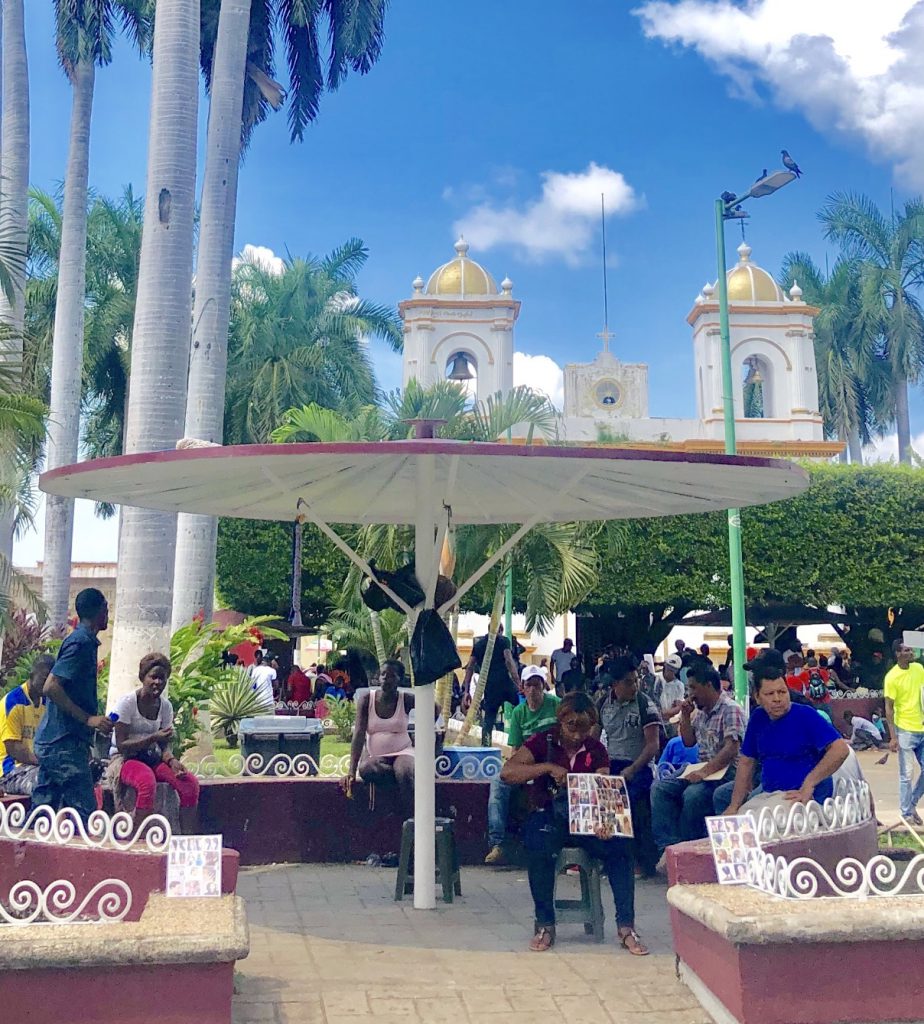PhD candidate, Talia Mills, was awarded funding from the Department of Geography’s Small Grants Fund to travel to Mexico to gather primary data for her research. She tells us how she had to refocus her project due to what she encountered out there.
My postgraduate research examines both the conceptual and empirical relationships between gender based violence and displacement among Central American adolescent women who are in active transit through Mexico. In order to do so, my fieldwork seeks to speak to young women at various points along their displacement journey including Tapachula, Chiapas and the outskirts of Mexico City. So, being able to travel between the two locations to conduct my primary data collection was essential in both launching and shaping this work.
Tapachula is a critical point in the journey for migrants in the region as it is situated along the Mexican/ Guatemalan border and serves for many as the primary point of entry into Mexico. I spent three months here where I worked with a grassroots organization, Iniciativas para el Desarollo Humano (Initiatives for Human Development), that among other services, supports migrant youth. Through this, I was able to go into migrant shelters and provide workshops to young migrant women on a variety of topics.
My time spent in Tapachula was critical in reshaping my research. Upon arriving, the context and characteristics of displacement at this point on the border were very different than I had considered during my initial research process and project design. While I had read about the migrant caravans, I did not understand their resulting consequences on the border city. Prior to my arrival in the autumn 2019, under mounting pressure to stem the mass flows of migrants associated with the caravans, Mexican president Andres Manuel Lopez Obrador (AMLO) was forced to come to an agreement with Trump, or otherwise face tariffs and sanctions. The two countries came to an arrangement in June 2019 which was twofold; first, was a deal for the “Migrant Protection Protocols,” and second, the sending of Mexico’s National Guard to the southern border, namely Tapachula.
By the time I was in Tapachula the results of this were felt throughout the city. The hypersecuritization was overt where militarized troops roamed the streets in search of migrants. It also led to what some have described as migrants being ‘trapped’ in Tapachula, awaiting documentation that either enables them to travel through Mexico or documentation for refugee status. The central square, Parque Miguel Hidalgo (Miguel Hildalgo Park), was filled with migrants daily, waiting for the outcomes of these processes (pictured below).

In my original investigation of the literature, approaches to displacement in this context focus on the experiences of Central Americans who are fleeing rampant levels of violence in their home countries. This led me to develop my research questions and overall aims of my work to specifically focus on adolescent women from this region. However, when I arrived, while there were indeed many individuals from neighboring Honduras, Guatemala and El Salvador, what became most notable were the amount of displaced individuals from around the world that make up the current demographic of people in Tapachula. This includes communities from Cuba, Haiti, African countries such as Cameroon and Uganda, and the Middle East. The diversity of those who are displaced has catalyzed a reworking of my field of study to more broadly consider adolescent women as opposed to solely focusing on those from Central America.
It is through the department’s support of my travel to Tapachula that I have been able to refine and reconsider this research, for which I am truly grateful.